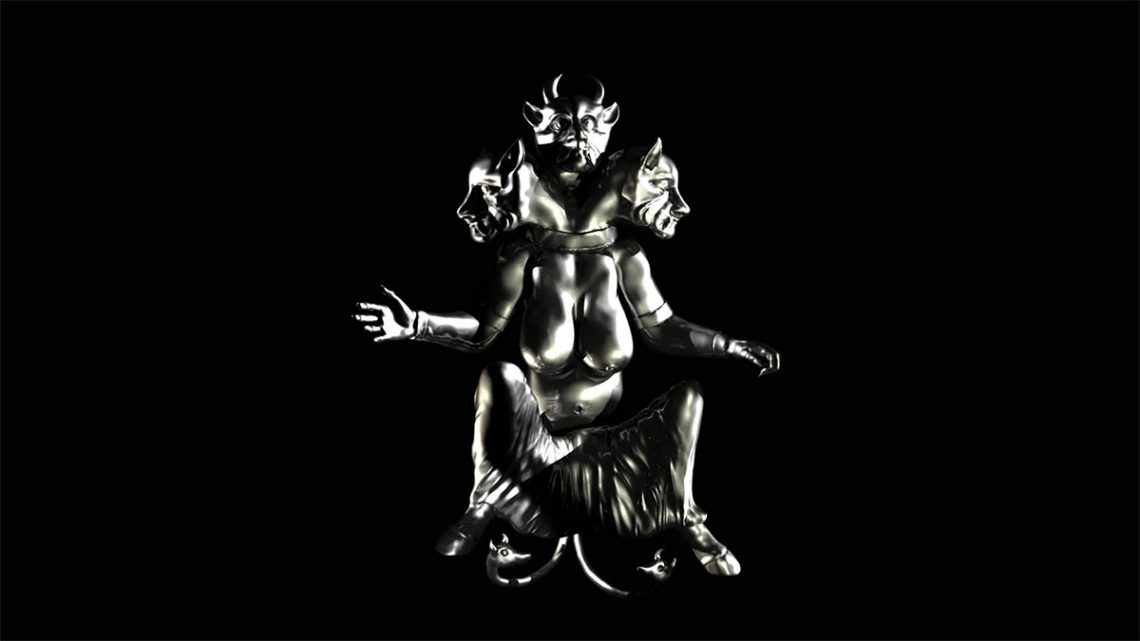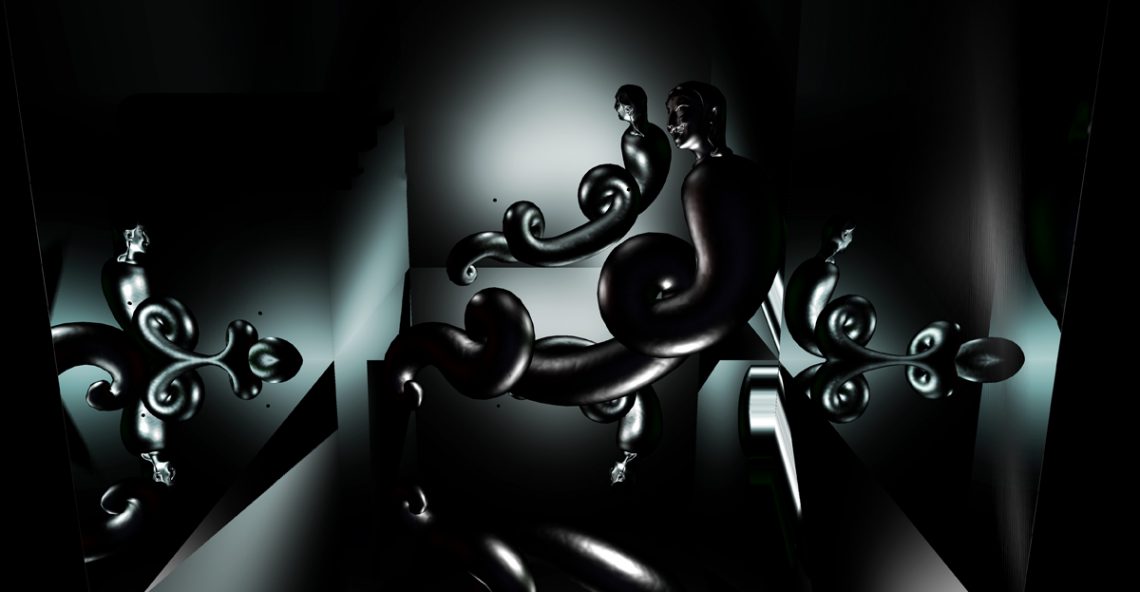She Who Digs the Unknown: Morehshin Allahyari
Morehshin Allahyari is a digital artist that is inspired by female and queer monstrous figures from the Middle East. She re-writes their stories and gives them new forms through 3D modeling and printing. We’re looking forward to hearing more about her project and inspirations!
How are you dealing with the lockdown? Where are you spending the quarantine?
It has been really helpful for self-reflection in some ways. It’s a weird pause. Especially being in New York, where suddenly outside is super quiet and there is no movement. I’ve been taking a lot of time to finalize some work stuff that I’ve hadn’t had time to do. At the same time, I’ve been giving myself some time and space to just rest and eat well and read books. It is sad to say that something like this had to happen for so many of us to actually be able to take a real break. What we had, that super fast, capitalist life that we were sucked into just hasn’t been working. It is nice to be able to step outside of that and think about things. I’ve been watching a lot of pre-recorded lectures online. Not live ones. Actually I’ve been avoiding live events. I can’t take it in terms of people constantly talking about the pandemic. I’ve been watching a lot of Bell Hooks, Octavia Butler and different panels and things like that.

What have you been reading in the last few weeks?
I’ve been reading fiction which I don’t have time for, usually. I’ve been reading Ursula LeGuin’s A Wizard of Earthsea. It’s so crazy, because I knew how Harry Potter was ripped off of this book. I didn’t really understand it until I started reading it. Now I see how it was completely stolen in some ways. Also, I am reading Bell Hooks’ All About Love finally, which I’ve been wanting to read for so long.
Can you tell us a bit about She Who Sees the Unknown? Why did you decide to work on jinn and monsters from the Middle East?
‘She Who Sees the Unknown’ is a project that I’ve started to work on from 2016 as a part of this one-year artistic research residency program called Eyebeam in NY. I wanted to focus on the stories of female or genderless, queer, monstrous figures from Middle Eastern mythical stories. I felt like we have so many of these figures that are forgotten or misrepresented, whereas we look at a history of literature of different cultures in Middle East and East Asia, so many of the stories are focused on male heroes. My first goal was to find these stories and see what are the female figures. I came up with this term, re-figuring as a way to find these things and through re-imagining these stories in the past, be able to re-imagine possibilities in the future. In a practical way, when I find one figure, I write a new story about that figure in relationship to some contemporary issue or topic in relationship to the future. So kind of again this idea of relationship between technology, history and future thinking in that sense.

I’ve worked on 5 main figures. Each of them have a story that I’ve been interested in and that I write a new story about. The storytelling takes different formats for each of these figures: a 2D video with voiceover, a VR piece, A web art piece. Each of them also have their own sculptures. So I find these older illustrations that I re-appropriate, 3D model and 3D print. So each have a sculptural element. In addition to that, I create these installation spaces for them. They each are very different in how I imagined their presentation and installation. In addition to showing the work, I also try to include this reading room that I’ve been building with the work. It has lots of books, essays and series of images that I’ve selected. It gives the audience the chance to dig deeper in understanding the history of these figures of jinn.
Why were you drawn to the figure of the jinn?
It felt like it was a figure that hasn’t been explored as much. The only way it has been explored is either like a public belief or in terms of academia it’s always been ignored. I saw a potential in them because, they are these hybrid creatures that are human and non-human. They are shapeshifters, which goes hand in hand with re-figuring. Also they are creatures that have will. The devil or angel don’t have will. But jinn have the will to obey or disobey. There’s a lot of power in that and I feel like we really lack this kind of figurations and image building. How within Western academia or Western thinking, feminist movement, Haraway comes up with the figure of the cyborg to turn around power structures. I feel like there are so many elements we can think about and play around with in jinn, to turn around power structures. I really honor them.

How was your creative process affected from this? What are you working on right now?
I’m working on an archive for ‘She Who Sees the Unknown’. It has been tedious, nerdy work. It has been hard to do it during the pandemic. I am also thinking about asking a friend of a friend in Iran, who is a historian to help me. I feel like I need a specialist’s confirmation. Because I’m so nervous to put it out with some information that is wrong or something. But there is a lot of stuff. So I’m just going through a lot of documents and files and trying to separate a section for the female figures. I also decided to build the website myself and not rely on an institution or whatever. I’m now applying for a grant to see if I can get some funding for it.
It is sad to say that something like this had to happen for so many of us to actually be able to take a real break. What we had, that super fast, capitalist life that we were sucked into just hasn’t been working. It is nice to be able to step outside of that and think about things.
As a digital artist, who has been producing digital art for many years how do you see the newfound interest in digital art from museums and art organizations?
Yeah, it’s so funny. Since the pandemic happened, you start receiving all these e-mails from galleries saying ‘we have now taken our work online, now you can view it’. And I’m like, yeah new media artist have been doing this for over 30 years, you guys are crazy. They act like they have just discovered it, and it’s like so exciting. These spaces and the art market have always been ignoring the digital and new media in some way, or not taking it as seriously as the traditional art. It’s really interesting that now this has forced people to rethink not just the possibility of the tool but also how much labour goes towards making digital art. I think now people who are trying to build an online gallery are starting to realize how much digital labour is invisible and how much work it takes to do it. I think that definitely, this will shift the landscape in some ways. After this, I do think things will have to shift and change. I don’t know what direction it will take but it will definitely shift something in the perception and understanding of online spaces. It’s nice to see that people are starting to recognize it, but also annoying that it is happening because of this.

Who inspires you these days?
These days I’m actually not inspired by artists at all. The past month specifically, I’ve been focusing a lot on black feminism movement. So as I’ve been telling I’ve been reading a lot of stuff like Bell Hooks, Octavia Butler and Audre Lorde.
After this, I do think things will have to shift and change. I don’t know what direction it will take but it will definitely shift something in the perception and understanding of online spaces.
What about your future projects?
I’m trying to research science fiction, because the next project I’m working on is focused on science-fiction, which ı know so little about. As you know that’s another thing in the Middle East, that genre is just not taken seriously. Growing up in Iran until I was 23, I really knew so little about it, until 4-5 years ago when I started to become more interested.
Who are your favourite digital artists?
Rasheedah Philips, Gelare Khoshgozaran, Eva papamargariti, Salome Asega, Luiza Prado De O. Martins.
Details on ‘She Who Sees the Unknown’ can be found here.